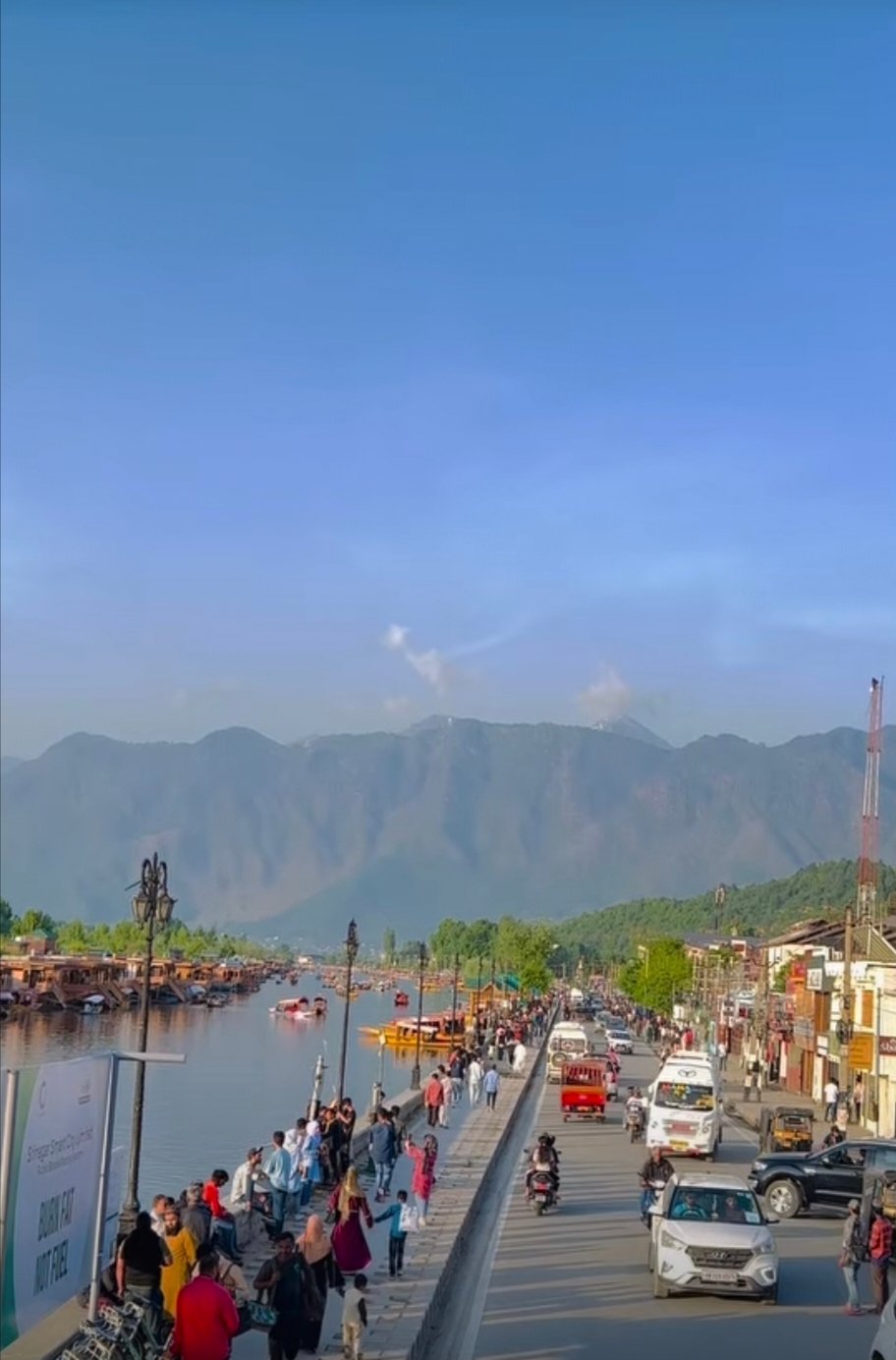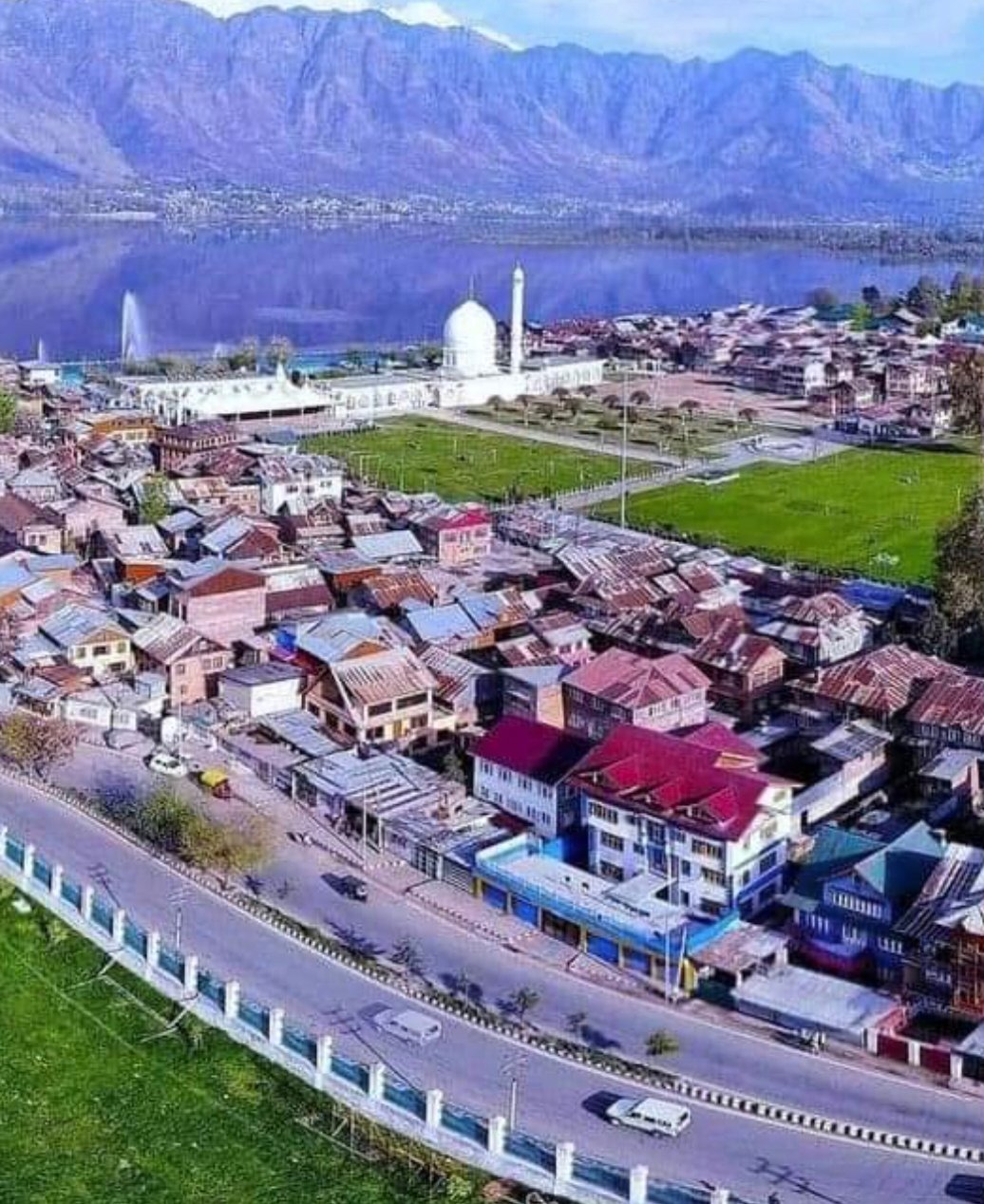Srinagar is the summer capital of Jammu and Kashmir (UT). It is situated in the centre of the Kashmir Valley on the banks of the Jhelum River and is surrounded by four districts and Ladakh UT. In the north it is flanked by Ladakh (UT) and Ganderbal in the South by Pulwama in the north-west by Budgam. The capital city of Srinagar is located 1585 meters above sea level. The city is famous for its gardens, lakes and houseboats. It is also known for traditional Kashmiri handicrafts and dried fruits.
The city is located on both the sides of the Jhelum River, which is called Vyath in Kashmir. The river passes through the city and meanders through the valley, moving onward and deepening in the Dal Lake. The city is famous for its nine old bridges, connecting the two parts of the city.
Hokersar is a wetland situated near Srinagar. Thousands of migratory birds come to Hokersar from Siberia and other regions in the winter season. Migratory birds from Siberia and Central Asia use wetlands in Kashmir as their transitory camps between September and October and again around spring. These wetlands play a vital role in sustaining a large population of wintering, staging and breeding birds.
Hokersar is 14 km (8.7 mi) north of Srinagar, and is a world class wetland spread over 13.75 km2 (5.31 sq mi) including lake and marshy area. It is the most accessible and well-known of Kashmir’s wetlands which include Hygam, Shalibug and Mirgund. A record number of migratory birds have visited Hokersar in recent years.
Birds found in Hokersar—Migratory ducks and geese which include brahminy duck, tufted duck, gadwall, garganey, greylag goose, mallard, common merganser, northern pintail, common pochard, ferruginous pochard, red-crested pochard, ruddy shelduck, northern shoveller, common teal, and Eurasian wigeon.
History of Srinagar
Around 960 CE., Srinagar was made the capital of Kashmir. The history of Srinagar is vast with it being ruled by many rulers and empires. Following are the list of rulers that ruled Srinagar.
Srinagar was ruled by the Mauryan empire till around the 14th century and it was emperor Ashoka, who had introduced Buddhism to the valley of Kashmir. The Kushans believed to have controlled this region during the first century who ruled over this place from their stronghold at Pakistan and Afghanistan. Even King Vikramaditya from Ujjain, ruled over this place before transferring the reigns of control to a nomaid tribe named Huns during the 6th century. One of the most terrified rulers of the city was Mihirkula who belonged to this tribe.
After the 14th century, the city came under the Mughal rule and was ruled by the Muslim Kings. This city was made the capital during the rule of Yusuf Shah Chak who was then tricked to death by Akbar who set up his dominion on the city post the fall of Yusuf Shah Chak. It was in the year 1707 that the Mughal dominion came to an end with the death of their last King, Aurangzeb and then Srinagar came under the reign of the Durrani Empire. This empire was the leader of the Pashtun tribe and they ruled on Srinagar for multiple decades. It was in 1814 that the rule of Sikhs was established and Maharaja Ranjit Singh ruled over Kashmir. It was ruled by the Sikhs till the British Raj came into India. Till the year 1947 Srinagar was considered as a princely state in the British India.
It was on October 22nd in 1947 that some tribes from Pakistan named Mehsud and Afridi tried to enter the city and the then Maharaja wanted an independent state and did not accept the rule of Indian or Pakistani government. However, he signed an accession on October 26th 1947 when Pakistani tribesmen tried to capture the city and the government of India then sent troops to stop the Pakistani tribesmen from entering the city.



Yes, travelling to Kashmir is absolutely safe. However, don’t be shocked by the abundance of military checkpoints, tanks on the side of the road, military trucks and heavy armed soldiers roaming down the streets.
Travelling to some parts of Ladakh that lie close to the borders of China and Tibet do require a permit.

During Summer the temperature in Srinagar remains lowest as 12 degree & high as 26 , in July lowest 16 & high 30 degree, in Aug too is same, Normal clothing should be good enough, recommend to carry sweeter, sometimes in the late evening you may feel slight cold, most of the Mughal gardens are open & explore Dal lake/Nigeen lake in Shikara.

The winter season in Kashmir begins from December to February. And temperature remains between -2 to 8, you will not be able to see any gardens, & would not recommend you to stay at the house boat, as it would get very cold, sometimes we can see the lake freezing, Gulmarg would be the best place during this time of season.

The Kashmir Valley has entered into autumn season, which usually falls during September-November. The leaves of trees turn golden and reddish. The word in Kashmiri language for autumn is 'harud' Tourists and locals during their visit to a garden laden with Chinar trees.

One could see flowers blooming during Spring season ( though we have moderate rains during this time of the season across Kashmir Valley. During Spring ,Flowers of different kind and seen in various places & Asia's largest garden 'Tulip' is opened for public during March end just for 30 days.
Loretta Shelton -
25 January, 2022Lorem Ipsn gravida nibh vel velit auctor aliquet.Aenean sollicitudin, lorem quis bibendum auci elit consequat ipsutis sem nibh id elituis sed odio sit amet nibh vulputate cursus a sit amet mauris.Praesent explicari id eum.